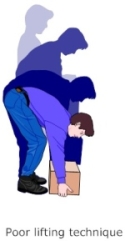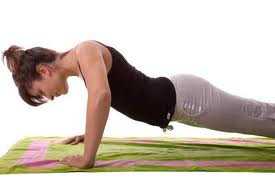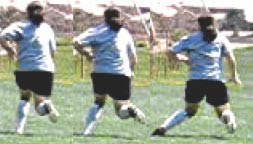“WOD, Box, Kipping, muscle-up”.
When you first enter the crossFit world it seems like they’re speaking a different language. Then, you bravely take a step into a “box”, learn some new terms, and you realize, it is a different world. Take your next step into this world and now you’re doing “wall-ball’s, box-jumps, and dominating your WOD (workout of the day). But, like any high level physical activity, there are some common injuries to look out for, prevent, and treat if you are, or are going to be a crossFit athlete.
Let’s get one thing straight before we start talking common crossFit injuries. CrossFit is awesome. The sense of camaraderie and competition has helped tens of thousands of people move and exercise. CrossFit and the common injuries associated with it are far superior to the common injuries and diseases associated with a sedentary lifestyle. Look at other forms of recreational and competitive exercises including running, cycling, playing football and basketball; all are great forms of exercise, but they all have common injuries as well. Move better, listen to your body, and exercise smartly. Get in touch with a good physical therapist to help you initiate and maintain a healthy lifestyle.
With that disclaimer out of the way and without further adieu, here are the 5 most common injuries associated with crossFit, as well as tips you can do to treat and prevent them.
1) Low Back Pain
If you are going to participate in crossFit, get ready to squat. The squat is simply the best exercise to work the whole posterior chain (glutes, hamstrings), a vital area of the body that is typically ignored. For this reason, the inclusion of the squat in any exercise program is a great idea, as long as you have the flexibility and strength to pull it off. When one lacks hip flexion, or has poor abdominal and glut activation, or weakness of the glutes, the compensation is excessive trunk flexion and overuse of the lumbar spine paraspinals. This muscle group is simply not made to support the trunk during a squat, let alone several repetitions of the squat, and especially not with weight over the shoulders.
Treatment / Prevention
– Have your physical therapist check your hip flexion ROM as well as the strength and activation of your glutes during a squat.
– Ensure proper squat form without weight before adding weight. You may require corrective exercise for flexibility and muscle coordination before performing a multitude of squats with weight or for time.
2) Anterior Shoulder Pain
Shoulder pain amongst this group is due primarily to one of two factors (or a combination of the two). One factor is that many crossFit exercises including the overhead squat, the snatch, and the thruster all require the shoulder to move to its end range of motion into flexion and external rotation. If you don’t have this range of motion, then aggressively throwing your shoulder towards the end range of motion can result in shoulder impingement. The second factor is that many crossFit exercises place the weight anterior to the body which may result in excessive recruitment of the biceps and pecs. This imbalance between anterior musculature and slap stabilizers can, once again result in impingement at the shoulder.
Treatment / Prevention
– Have your passive ROM assessed by your therapist. If you don’t have 180 degrees of passive flexion while lying on the table, don’t expect to lift to 180 degrees during a snatch.
– Assess the activation and strength of your middle trapezius, lower trapezius, and serrates anterior. These guys should be working to counteract the pull of the biceps and pecs.
3) Wrist Pain
Once again, crossFit is bound to incorporate squats, and lots of them. One version of the squat is the front squat where you place the barbell in front of you in the rack position. This position places your wrist into maximal wrist extension while holding a load. This is very similar to any plank work you may do, again a favorite amongst crossFit trainers.
Treatment / Prevention
This one is pretty simple. You need full wrist extension range of motion to get into this position. Without it, you will have discomfort every time you place your wrist in maximal extension.
4) Knee Pain
Squats, squats, and more squats. And some times lunges. Once again, squats are great for the posterior chain and they are a very functional exercise. That myth that squats are bad for your knees is completely false. Let’s change the phrase to “bad squats are bad for your knees”. Squatting with excessive knee flexion compared to hip flexion, and/or excessive femoral adduction, and/or poor gluteal activation can result in a high amount of stress on the knee joint. Read this previous blog for more specifics on Physical Therapy and knee pain here.
Treatment / Prevention
– Have your physical therapist assess your squat
– Have your glute strength assessed and perform corrective exercises to activate your glutes in order to avoid the excessive knee flexion and/or femoral adduction compensations.
5) Elbow Pain
One of the most common causes for elbow pain is excessive gripping, something crossFit athletes do a lot of when they begin adding weight to their exercise program. All of the muscles responsible for gripping originate at the elbow. Repetitive gripping therefore results in overuse injuries at the elbow.
Treatment / Prevention
A new focus for treatment of lateral epicondylitis, or elbow pain with gripping, is strengthening of the scapula stabilizers. Improving the stability at the proximal shoulder has resulted in a decreased amount of stress at the elbow and may therefore eliminate elbow discomfort with gripping tasks. For more on scapula stability for the lateral elbow, check out this article.













